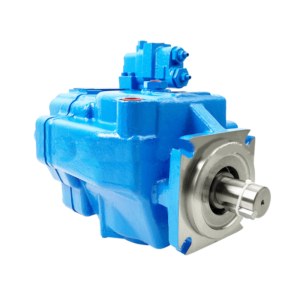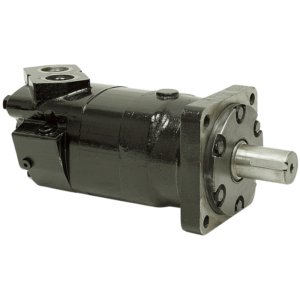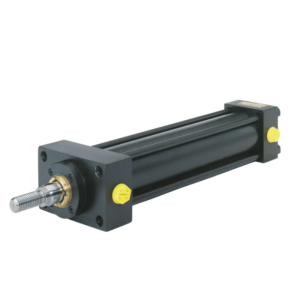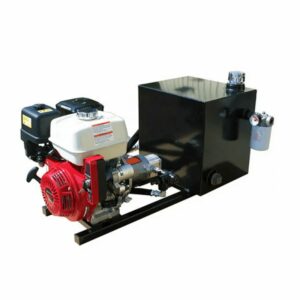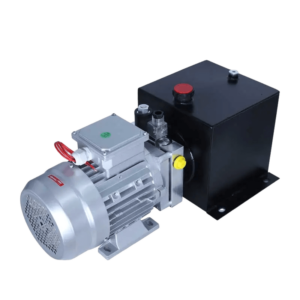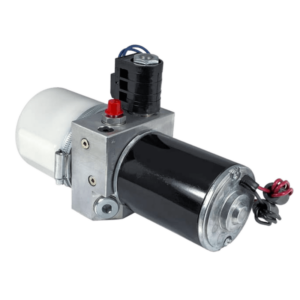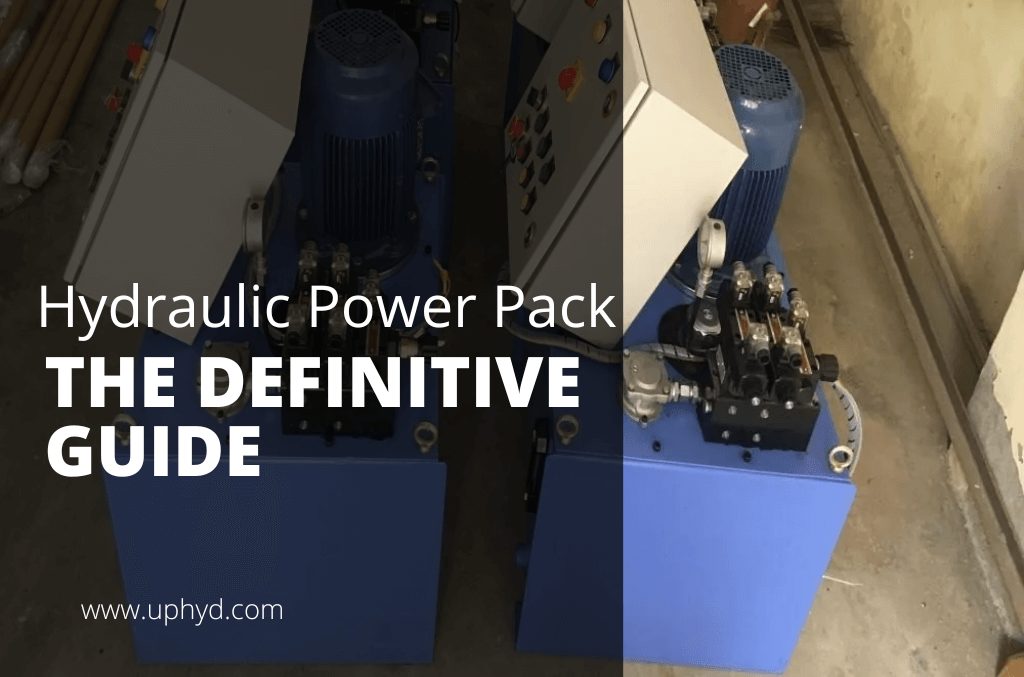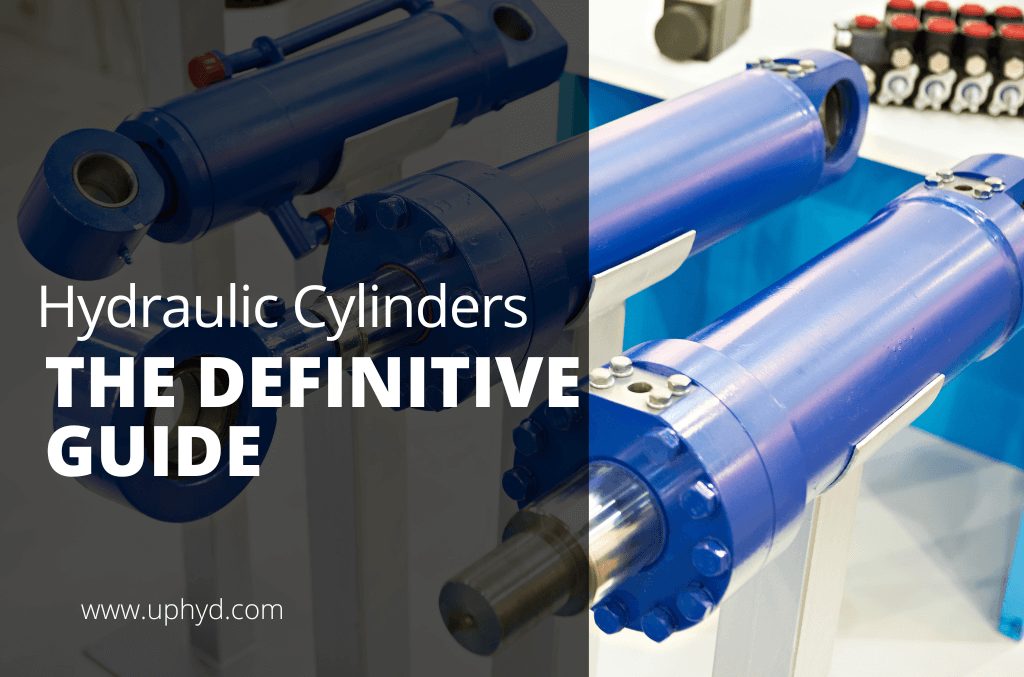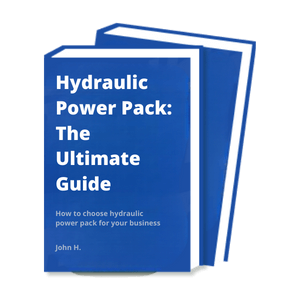PRODUCT FEATURES
Hydraulic Cylinders Manufacturer to Rocket Your Business
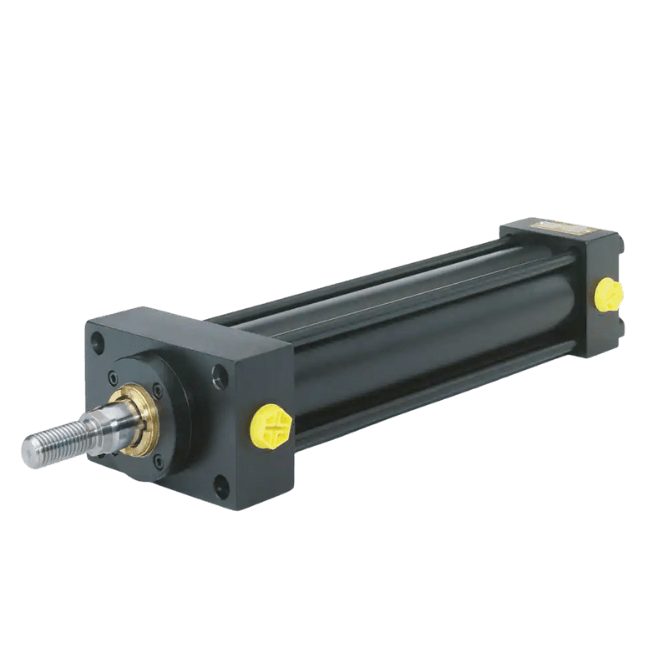
PRODUCTS
Proud To Offer a Wide Variety of Products
If you are looking for something specific that isn’t listed on our website yet, just contact us today!

ABOUT US
Who is Uphyd.com
Uphyd.com have seen that today there are also many hydraulic power pack companies in China & internationally. However, their solutions were still stuck a few years ago.
In fact, we have been upgraded in recent years, and uphyd.com hope our smart and flexible solutions can inject fresh blood into this market.
PARTNER
Trusted by 530+ Top Companies





BUYER’S GUIDE
The Definitive Guide to Hydraulic Cylinders
If you’re in the market for a hydraulic cylinder, you may be feeling a bit overwhelmed. With all of the different options available, how do you know which one is right for you? Not to worry – we’re here to help.
In this guide, we’ll walk you through everything you need to know about hydraulic cylinders. We’ll explain what they are, how they work, and who they’re best suited for.
By the end of this post, you’ll be able to confidently choose the perfect hydraulic cylinder for your needs. Let’s get started!
Table of contents
1. What Is Hydraulic Cylinders?
Hydraulic cylinders are a type of hydraulic actuator that uses hydraulic fluid to generate linear force and motion. They are commonly used in industrial and construction applications, as well as in many other areas where a linear force is required.
Hydraulic cylinders are typically classified by their bore size, rod size, and overall length. The bore is the diameter of the cylinder barrel, and the rod is the diameter of the piston rod. The overall length is the distance between the cylinder’s mounting flanges.
Hydraulic cylinders are available in a variety of different materials, such as aluminum, steel, and stainless steel. The material choice is typically based on the application and operating conditions. This is because hydraulic cylinders are subject to a variety of different loads, such as hydraulic pressure, friction, and corrosion.
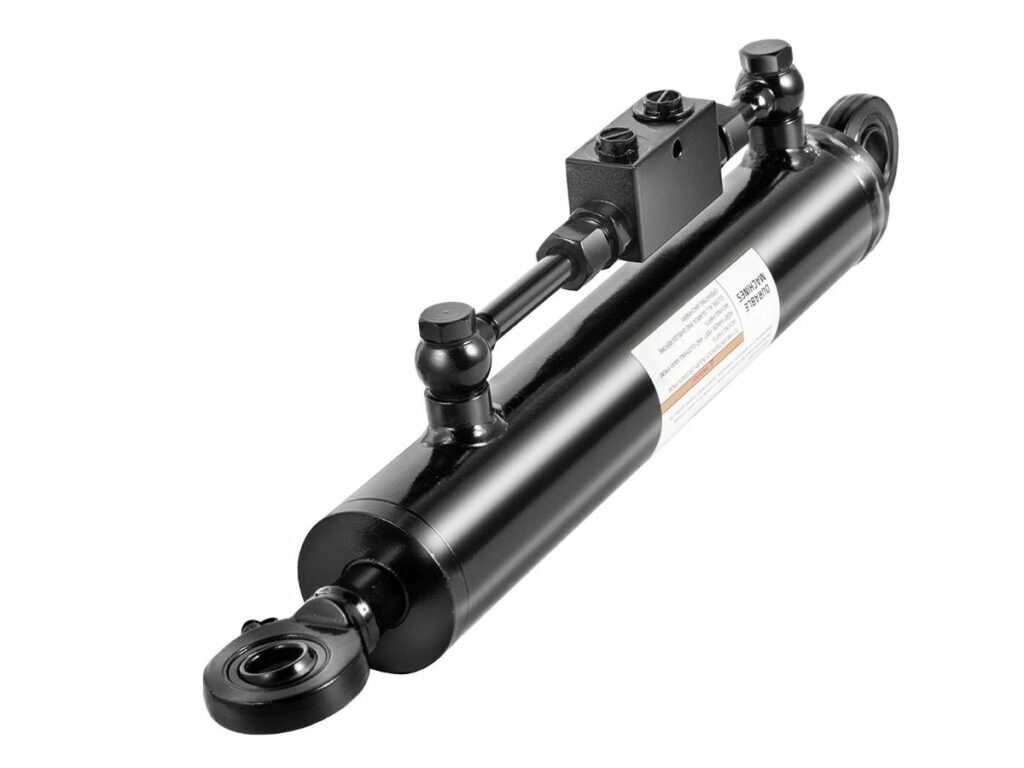
2. Key Components of Hydraulic Cylinders
A hydraulic cylinder is a hydraulic actuator that converts hydraulic energy into mechanical energy. It consists of a number of key components that work together to create linear motion. Here are the key components of hydraulic cylinders and how they work together:
Piston
The piston is the part of the hydraulic cylinder which exerts pressure on the hydraulic fluid inside the cylinder. The piston is connected to the rod, which extends out of the cylinder. As hydraulic fluid is forced into the cylinder by the hydraulic pump, the piston is forced down, causing the rod to extend.
Piston Rod
The piston rod is the part of the hydraulic cylinder which connects the piston to the load. The piston rod is what extends out of the cylinder when hydraulic fluid is forced into it by the hydraulic pump.
Gland
The gland is the part of the hydraulic cylinder which seals in the hydraulic fluid. The gland is located at the end of the cylinder opposite the piston. The gland prevents hydraulic fluid from leaking out of the cylinder.
Port
The port is the part of the hydraulic cylinder through which hydraulic fluid enters and exits. The port is located at the end of the cylinder opposite the gland. The port allows the hydraulic fluid to flow into and out of the cylinder.
Barrel
The barrel is the part of the hydraulic cylinder which contains the hydraulic fluid. The barrel is located between the gland and the port. The barrel holds the hydraulic fluid that is used to power the hydraulic cylinder.
Seal
The seal is the part of the automatic hydraulic cylinder that prevents hydraulic fluid from leaking out of the cylinder. The seal is located between the piston and the barrel. The seal prevents hydraulic fluid from escaping from the cylinder.
Clevis
The clevis is the part of the hydraulic cylinder that is mounted on the load. The clevis is located at the end of the hydraulic cylinder opposite the port. The clevis provides a connection point for the hydraulic cylinder to the load.
End Cap
The end cap is the part of the hydraulic cylinder that works with clevis to keep the pressure in the light duty hydraulic cylinder. The end cap is located at the end of the hydraulic cylinder opposite the gland. The end cap helps to keep hydraulic fluid from leaking out of the hydraulic cylinder.
These are the key components of hydraulic swing cylinders. Each component plays an important role in the functioning of the hydraulic cylinder. Without any one of these components, the hydraulic power cylinder would not be able to function properly.
3. How Do Hydraulic Cylinders Work?
Hydraulic cylinders work by using hydraulic fluid to create pressure. The hydraulic fluid is pressurized by a pump, and this pressure is used to move a piston in the cylinder. The piston is connected to a double rod end, which is then used to generate linear force.
Hydraulic cylinders are often used in hydraulic systems because they are very efficient. Hydraulic cylinders can generate large amounts of force with relatively little input from the hydraulic pump. This makes them ideal for use in a wide variety of applications where hydraulic power is needed.
If you want to learn more about how hydraulic cylinder works, watch this video.
4. Types of Hydraulic Cylinders and Their Functions
There are different types of hydraulic cylinders, each with its own specific function. Here is a look at some of the most common types of mobile hydraulic cylinders and what they are used for:
Single-Acting Hydraulic Cylinder
A single-acting hydraulic cylinder is the most basic type of lightweight hydraulic cylinder. It uses hydraulic fluid to create a force in one direction, and spring tension to return the piston back to its original position.
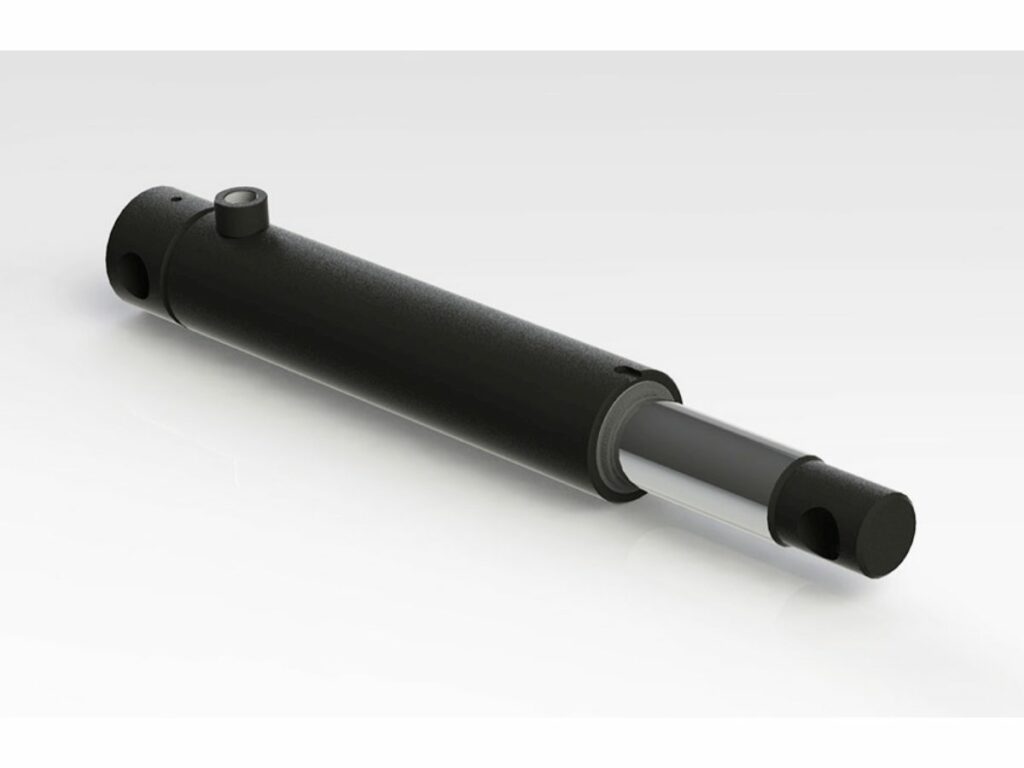
Double-Acting Hydraulic Cylinder
A double-acting hydraulic cylinder is a more complex type of hydraulic cylinder that uses hydraulic fluid to create force in both directions. This type of hydraulic cylinder is often used in applications where high forces are required, such as in construction and manufacturing.
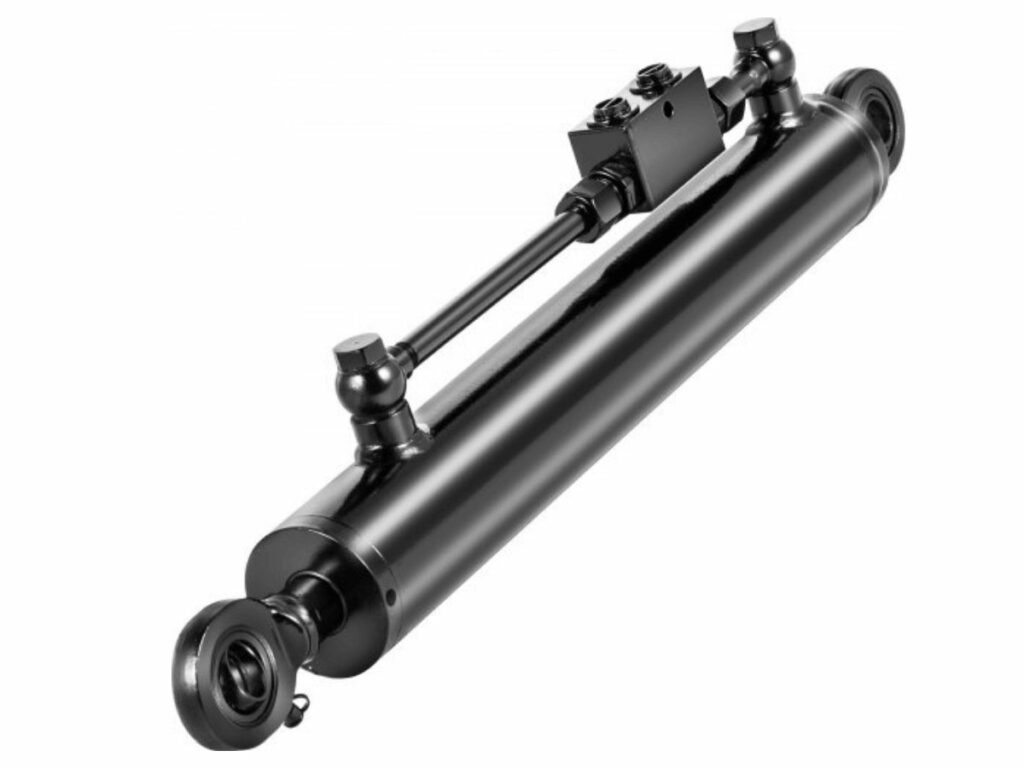
Telescopic Hydraulic Cylinder
Telescopic cylinders can be single or double-acting cylinders. A hydraulic telescopic cylinder is a type of hydraulic cylinder that has more than 5 tubings of various lengths nested inside each other. This design allows for a much longer stroke length than a standard hydraulic cylinder.
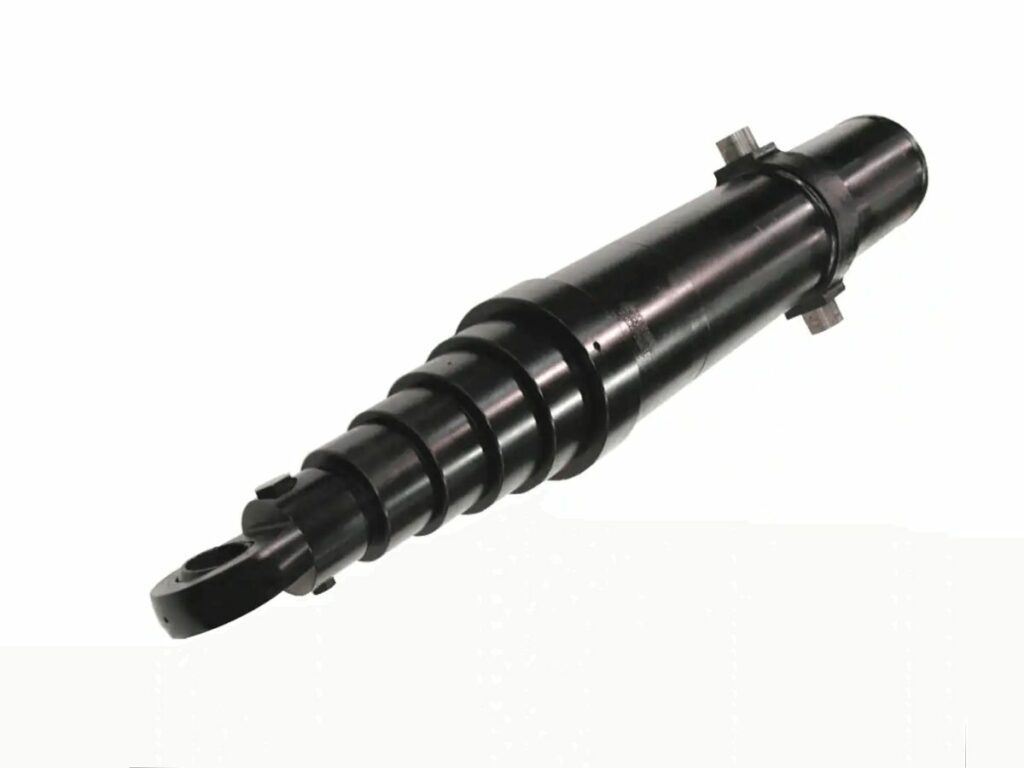
Tie-Rod Hydraulic Cylinder
A tie-rod hydraulic cylinder is a type of hydraulic cylinder that uses threaded steel rods to hold the end caps in place. Heavy duty tie rod hydraulic cylinders are often used in applications where high pressures are required, such as in hydraulic presses.
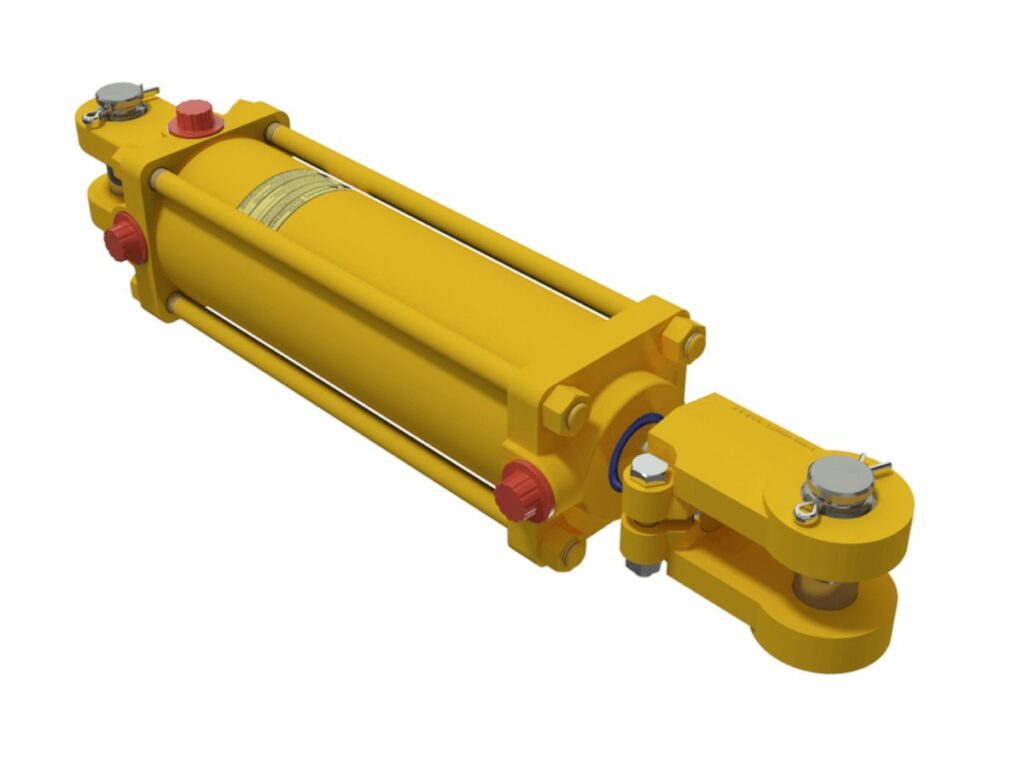
Welded-Rod Hydraulic Cylinder
In a welded-rod hydraulic cylinder, the end caps are welded to the cylinder body. The hydraulic piston is connected to the rod, which in turn is connected to the end cap. This design creates a strong and durable hydraulic cylinder that can withstand high pressures.
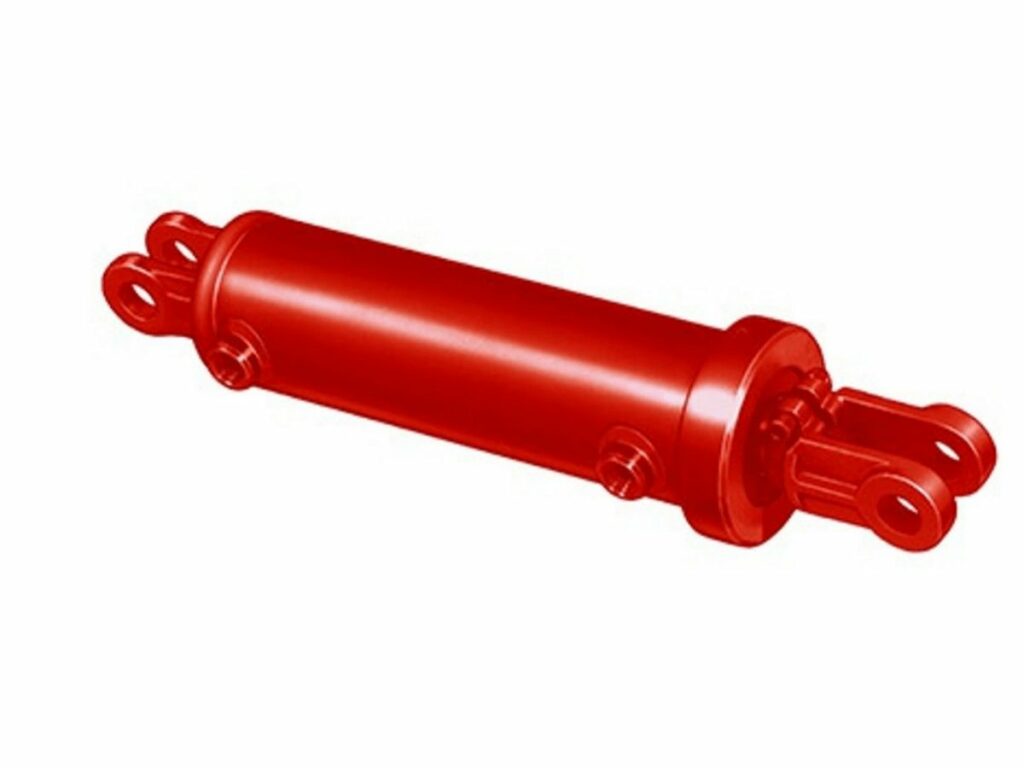
These are just some of the most common types of hydraulic cylinders. When selecting a hydraulic cylinder, it is important to consider the type of application it will be used and the forces that will be exerted on it. This will help to ensure that you select the hydraulic cylinder that is best suited for your needs.
5. 5 Common Industry Applications of Hydraulic Cylinders
Hydraulic cylinders are widely used in a variety of industries for their linear force-generating capabilities. Here are some common industry applications:
#1 Manufacturing
Hydraulic cylinders are often used in manufacturing applications to provide the linear force needed for stamping, die-cutting, and other production processes.
#2 Construction
Hydraulic cylinders are also used extensively in construction equipment, such as excavators and bulldozers. Their hydraulic power allows these machines to perform a variety of functions, such as digging, lifting, and moving heavy loads.
#3 Agriculture
Portable hydraulic cylinders are also used in agricultural equipment, such as tractors and combine harvesters. Their hydraulic power allows these machines to perform a variety of functions, such as plowing, tilling, and harvesting crops.
#4 Transportation
Wheel lift Hydraulic cylinders are also used in a variety of transportation applications, such as automotive brakes, airplane landing gear, and railroad coupling systems.
#5 Marine
Hydraulic cylinder with motor is also used extensively in the marine industry, for a variety of applications including steering systems, stabilizers, and winches.
These are just a few of the many industries in that engine lift hydraulic cylinders are used. Their versatility and hydraulic power make them an essential component of many machines and systems.
6. The Differences Between a Hydraulic and Pneumatic Cylinder
There are several key differences between hydraulic and pneumatic cylinders. Here is a breakdown of the most important hydraulic and pneumatic cylinder differences:
| Power Source | The biggest difference between hydraulic and pneumatic cylinders is the power source. Hydraulic cylinders are powered by hydraulic fluid, while pneumatic cylinders are powered by compressed air. |
| Force | Hydraulic cylinders can generate much more force than pneumatic cylinders. This is because hydraulic fluid is much denser than air, so it can transmit more force. |
| Speed | Pneumatic cylinders are generally faster than hydraulic cylinders. This is because compressed air has a higher density than hydraulic fluid, so it can move the piston more quickly. |
| Efficiency | Hydraulic cylinders are more efficient than pneumatic cylinders. This is because hydraulic fluid is denser than air, so it can transmit more force with less energy. |
| Cost | Pneumatic cylinders are generally less expensive than hydraulic cylinders. This is because hydraulic systems require more complex components, such as pumps and valves, which can add to the overall cost. |
As you can see, there are several key differences between hydraulic and pneumatic cylinders. Make sure to consider these factors when deciding which type of cylinder is right for your application to ensure optimum performance.
7. Where To Buy Hydraulic Cylinders
If you’re looking for compact hydraulic cylinders, there are a few places you can check out. Here are a few ideas:
Online Stores
There are many online stores that sell short and long hydraulic cylinders. A quick Google search will reveal a long list of options. Some good places to start include Amazon, eBay, and Grainger.
Local Stores
If you’d prefer to shop locally, there are several stores that sell hydraulic cylinders. Home Depot, Lowe’s, and Menard’s are all good options. You can also check out your local hardware store or agricultural supply store.
Manufacturers
If you know the specific manufacturer you’re looking for, you can check out their website. Many hollow hydraulic cylinder suppliers sell directly to customers. This is a good option if you’re looking for a specific type of cylinder.
A great manufacturer to start with is Uphyd. We offer a wide variety of single acting and double acting cylinder, so you’re sure to find what you’re looking for. Contact us today to learn more.
No matter where you choose to buy your aluminum hydraulic cylinders, be sure to do your research and compare prices before making a purchase. With a little bit of effort, you should be able to find the perfect hydro cylinders for your needs.
8. The Average Cost of Hydraulic Cylinders
The average cost of hydraulic cylinders can vary depending on the size and type of cylinder. But generally, hydraulic cylinders are not too expensive, with the average cost falling somewhere between $100 and $200.
This cost range makes hydraulic cylinders a relatively affordable piece of equipment, especially when compared to the cost of other hydraulic components. And because hydraulic cylinders are so versatile and widely used in a variety of applications, they are definitely worth the investment.
So when you’re considering the cost of industrial hydraulic cylinders, keep in mind that you’re getting a lot of value for your money. And if you shop around, you should be able to find a good deal on hydraulic cylinders that will meet your needs.
If you’re looking for hydraulic cylinders for sale, be sure to check out our website at Uphyd. We offer a wide variety of hydraulic cylinders at competitive prices. We also offer heavy duty hydraulic cylinders for sale, so you’re sure to find the perfect cylinder for your needs. Contact us today to learn more.
9. 6 Buying Tips About Hydraulic Cylinders
When it comes to hydraulic cylinders, there are a few things you need to keep in mind before making your purchase to ensure you get the best possible product for your money. Here are a few tips to help you choose the right hydraulic cylinder for your needs:
#1 Application
The first thing you need to consider is what the hydraulic cylinder will be used for. There are many different types of hydraulic cylinders on the market, each designed for specific applications. Make sure to choose a hydraulic cylinder that is designed for the specific application you need it for to get the best performance.
#2 Operating Pressure
The next thing you need to take into consideration is the operating pressure of the hydraulic cylinder. This is the amount of force that the hydraulic cylinder can generate and is measured in pounds per square inch (PSI). The operating pressure of hydraulic cylinders can range from:
- 2500 PSI
- 3000 PSI
- 3500 PSI
- 4000 PSI
- 5000 PSI
- 10000 PSI
It is important to choose a hydraulic cylinder with an operating pressure that is appropriate for the application you need it for. If you choose a hydraulic cylinder with too high of operating pressure, you may damage the equipment you are using it on.
#3 Bore Size
The bore size of a hydraulic press cylinder is the diameter of the piston inside the cylinder. The bore size of hydraulic cylinders can range from:
- 1 inch
- 1.5 inches
- 2 inches
- 2.5 inches
- 3 inches
- 4 inches
- 5 inches
- 6 inches
- 8 inches
- 10 inches
- 12 inches
The bore size you need will depend on the application you need the hydraulic cylinder for. Make sure to choose a bore size that is appropriate for the job you need it to do.
#4 Stroke Length
The stroke length of a hydraulic cylinder is the distance the piston can travel inside the cylinder. The stroke length of hydraulic cylinders can range from:
- 2 stroke
- 4 stroke
- 6 stroke
- 8 stroke
- 10 stroke
- 12 stroke
- 14 stroke
- 16 stroke
- 18 stroke
- 20 stroke
- 24 stroke
- 36 stroke
- 40 stroke
- 48 stroke
- 60 stroke
- 72 stroke
- 84 stroke
- 96 stroke
- 120 stroke
The stroke length you need will depend on the application you need the hydraulic cylinder for. Make sure to take measurements and know the required specifications before making a purchase to ensure you get the right long stroke cylinders for your needs.
#5 Cylinder Capacity
The cylinder capacity of a hollow hydraulic cylinder is the amount of fluid it can hold. The cylinder capacity of hydraulic cylinders can range from:
- 2 Ton
- 3 Ton
- 5 Ton
- 6 Ton
- 8 Ton
- 12 Ton
- 15 Ton
- 20 Ton
- 30 Ton
- 40 Ton
- 50 Ton
- 80 Ton
- 100 Ton
- 150 Ton
- 200 Ton
- 500 Ton
- 1000 Ton
When deciding on the capacity of hydraulic cylinder that you need, you will need to take into account the weight of the load you will be lifting and the amount of space you have available. This will help you determine the correct cylinder capacity for your needs.
#6 Mounting Type
The mounting type of a hydraulic lift cylinder is the way it is attached to the equipment it will be used on. The most common types of small hydraulic cylinders are:
- Threaded mount
- Welded mount
- Bolted mount
- Flanged mount
The type of hydraulic cylinder you need will depend on the equipment you are using it on and the application you need it for. Make sure to choose a hydraulic cylinder with the right mounting type for your needs.
These are just a few things to keep in mind when choosing a hydraulic cylinder. If you take the time to consider your needs and do some research, you will be sure to find the perfect hydraulic cylinder with power pack for your needs.
10. Conclusion
So there you have it, the definitive guide to hydraulic cylinders. We hope you found this information helpful and that it has answered any questions you may have had about these important pieces of machinery. If not, don’t hesitate to contact us at Uphyd for more information or assistance in selecting the perfect cylinder for your needs.
FEATURE BLOGS
READY TO LEARN MORE?
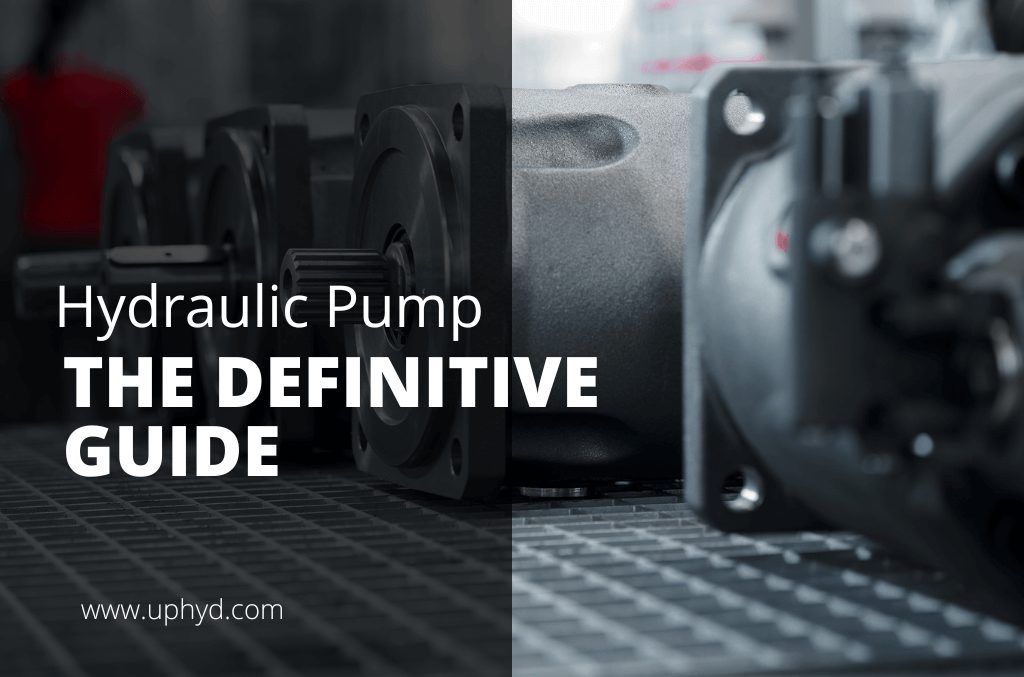
Find everything you need to know about hydraulic pumps in this comprehensive guide.


